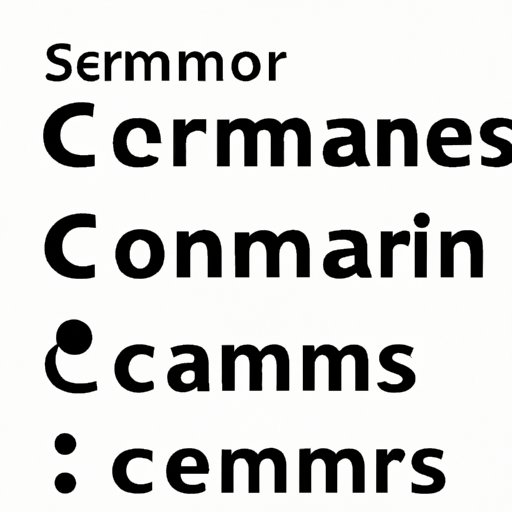
Introduction
As a budding writer, it is essential to understand the proper usage of punctuation marks in writing. One such punctuation mark that is commonly used but not always understood is the semi-colon. In this article, we will be discussing the proper usage of semi-colons and how to avoid common mistakes.
Historical Background
The semi-colon has an interesting historical background. It was first introduced by Italian printer Aldus Manutius in the 16th century, who called it “punctus semi-colonus.” At the time, it was used to separate clauses of equal weight and was considered an alternative to the full stop. Over time, the semi-colon’s usage has evolved, and it is now widely used to connect closely related independent clauses.
Proper Usage
To use a semi-colon correctly, it’s important to understand that it connects two closely related independent clauses. For example, “I have a meeting at 1 p.m.; I need to finish this report before then.” A semi-colon can also be used in place of a coordinating conjunction, such as “and” or “but.” An example of this would be, “She is studying for her exam; however, she is feeling overwhelmed.”
One way to think of a semi-colon is like a bridge connecting two pieces of land. The two independent clauses are connected by the semi-colon in the same way that the two pieces of land are connected by the bridge.
Common Mistakes
One common mistake people make when using semi-colons is mistaking them for commas. While commas are used to separate items in a list or to connect a dependent clause with an independent clause, semi-colons connect two complete thoughts.
Another mistake people make is using a semi-colon to connect a dependent clause with an independent clause. This is incorrect as it does not connect two independent clauses.
It’s also important to note that a semi-colon should not be used in a sentence containing a conjunction unless the conjunction is separating independent clauses. For example, “I have a meeting at 1 p.m., and I need to finish this report before then,” does not require a semi-colon as the two clauses are connected by a conjunction.
Conclusion
In conclusion, the proper usage of the semi-colon is important in effective writing. By connecting two closely related independent clauses, a semi-colon can help add clarity and flow to your writing. Remember to avoid common mistakes such as mistaking the semi-colon for a comma or using it to connect a dependent clause with an independent clause.





